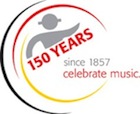Technique questions
Hi All,
I have been watching an instruction video on how to play the harmonica licks on 'Scratch My Back' by Slim Harpo and have come across the terms 'scoop' and 'vibrato'. Both techniques seem similar to 'dip' and 'tremolo' which I understand (and can play). What are the differences?
Also, can anyone point me to lessons on how to do tongue splits (octaves for example) on this site.
Thanks,
Mark.
Re players like William Clarke and Paul deLay, work on those 4-hole blow and 5-hole draw octaves, and you'll create a powerful sound that not all players are good at.
David lays out the foundations and has wonderful exercises for tongue blocking in TB study four, including the study song "The Split".
Probably never ever been asked before: I've been paying for 14 months holding my harp in my right hand. Should it have been my left all along?
fire away!
thanks
mark
Mark:
First question: As you face the harp, are the high notes to your right, or your left? If to your left, you're essentially holding the harp upside down. There are a few famous blues players (in the past, and current) who've played this way, with perhaps Paul Butterfield being the best known to do so.
Most players cradle the low-note end of the harp in their left hand, in the web between the thumb and forefinger. And then use the right hand for tone control, e.g., cupping, wah sound, etc.
There's some confusion based on old photos of folks like Little Walter, but many photos, whether album cover, publicity, or whatever, were reversed. (Not uncommon for format purposes.) And then there's Steve Guyger, who can really confuse folks because he can play both right side up and upside down. And even promotes it as a practice technique!
It really comes down to two things: 1. What's most comfortable for you, and 2. Which gives you the best playing ability. Keep in mind that the harp is really a two-hand instrument, whether you're using a harp mic or playing into a vocal mic, where either way the use of both hands gives you the widest range of effects.
Finally, unless you're totally left-handed and feel uncomfortable holding the harp the way David does in his video lessons, you can't go wrong with emulating the way he uses his hands. Note that his videos are not reversed images. E.g., he generally holds the harp in his left hand, using his right hand for effect. (But sometimes uses the right hand only to best show what he's doing.) If playing that way isn't comfortable, just flip the harp over and mirror-image David in his videos.
Enjoying your playing is more important that trying to copy something that isn't comfortable for you.
Hi All - trying to diligently play exclusively w TB techniqueafter a year of learning lip purse. I cannot figure out where I am going wrong - my emboucher is wrong, or my tongue not right, but I regularly hear the sound of rushing air when I play - draw or blow doesn't matter. I'm trying to isolate it. Looking in the mirror w the TBT it appears as if my tongue has a mind of its own. Any suggestions are very much appreciated.
Mil Gracias!
mark


Mark:
For octave tongue splits, check out David's "Artist Study - William Clarke" here on the site. And there are some other lessons with octave splits.
A scoop is generally a note start bent, then raised to the reed's regular pitch. Re vibrato and tremolo, welcome to decades of controversy. E.g., my first instrument lessons were on cello. "Vibrato" was when the player twisted the fretboard finger back and forth, so that the pitch of the bowed note varied up and down. Same with B.B. King's classic sound when he pushed a string back and forth with his fretting finger. "Tremolo" was an electronic trick where the volume varied up and down at a fast pace. Something the Hammond Organ folks came up with long ago.
Leo Fender was, of course, an engineer, not a musician. So when he figured out a way to add tremolo to his electronic circuits, he called it "vibrato." My first Fender amp, purchased in 1965 (still wish I had it) was a "Vibrolux Reverb." Named for its tremolo circuit, labeled "vibrato" on the knob. (And its spring reverb. Great for the surf music I was playing at the time.)
For a harp player, generally "vibrato" is when you change the pitch up and down with quick bending, and "tremolo" is when you use your breath (throat, diaphram, or like Jason Ricci, your abs) to change the volume.
But the two words get switched back and forth all the time.
Guess it's just one more thing for which we can thank Saint Leo Fender!